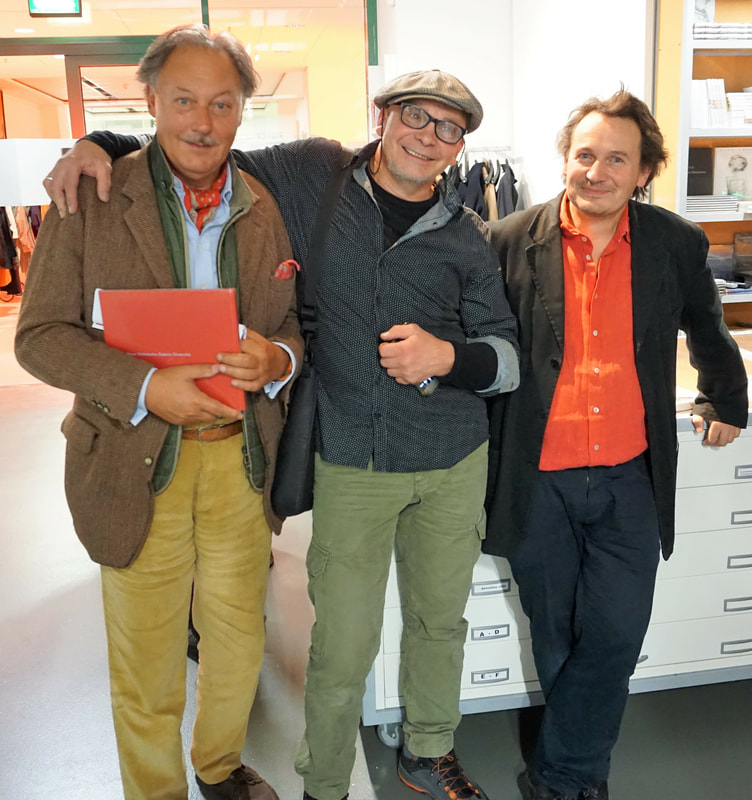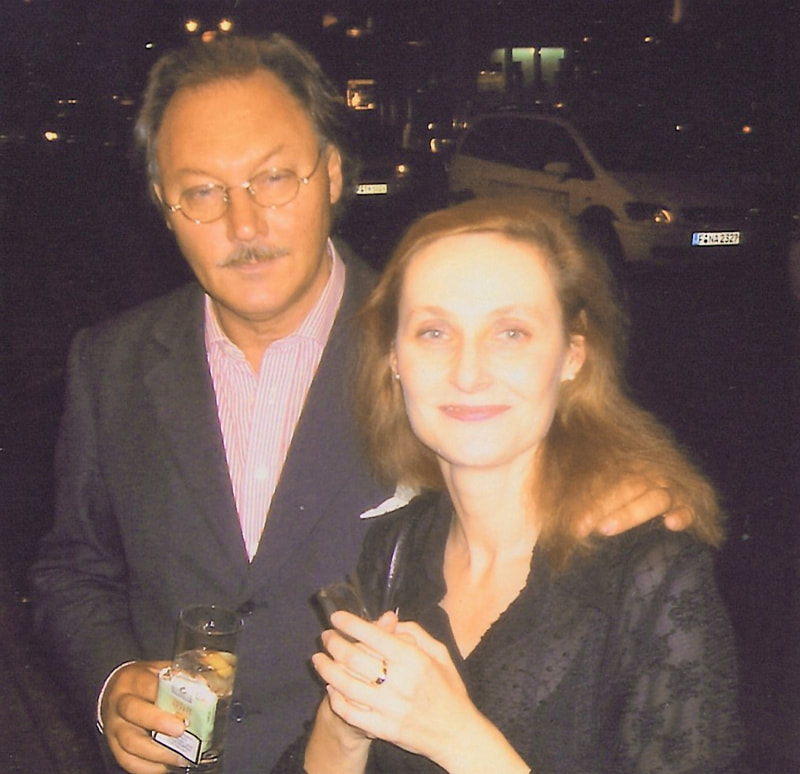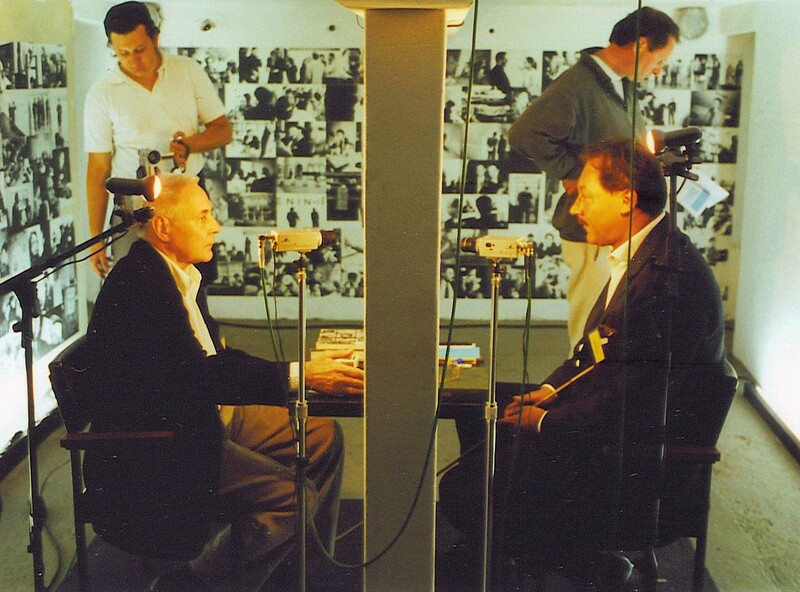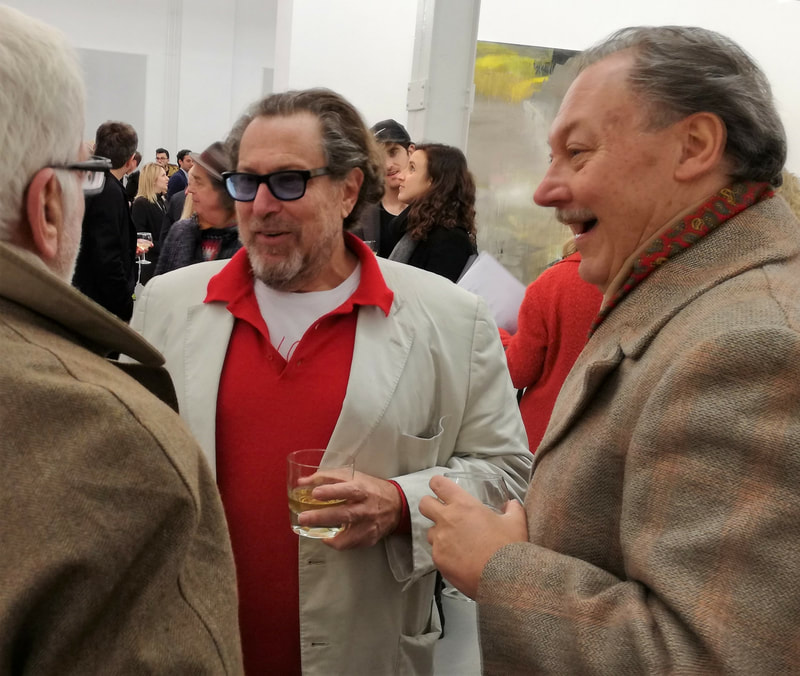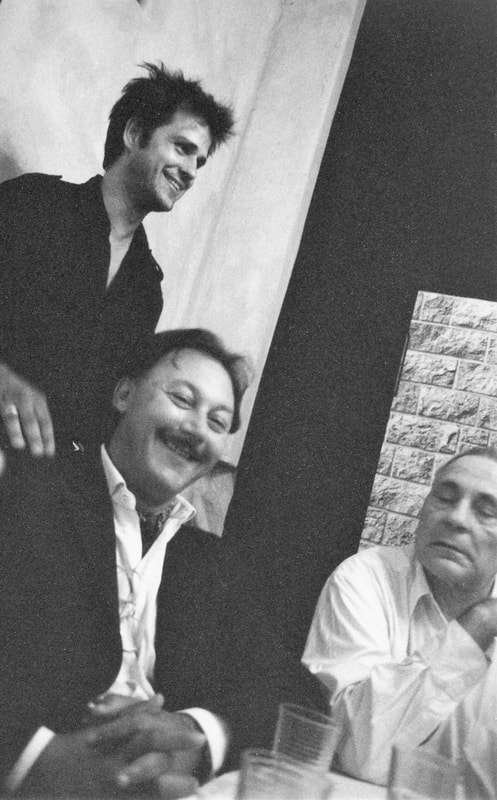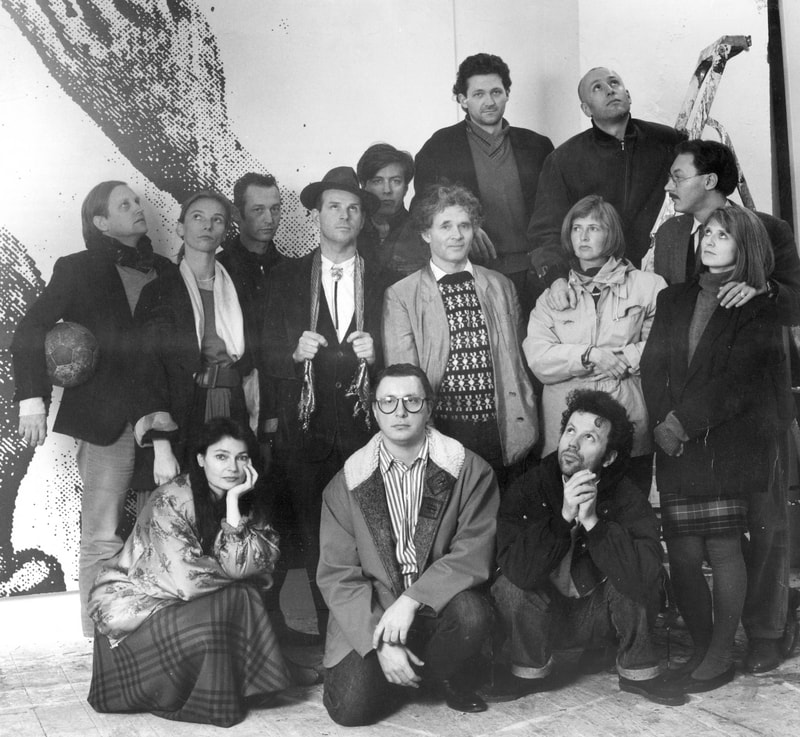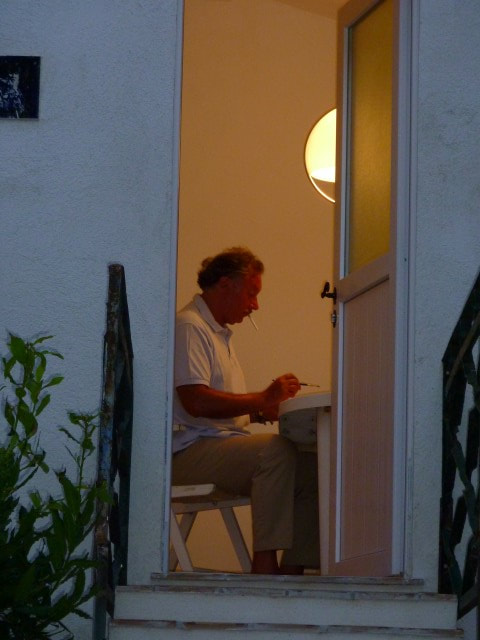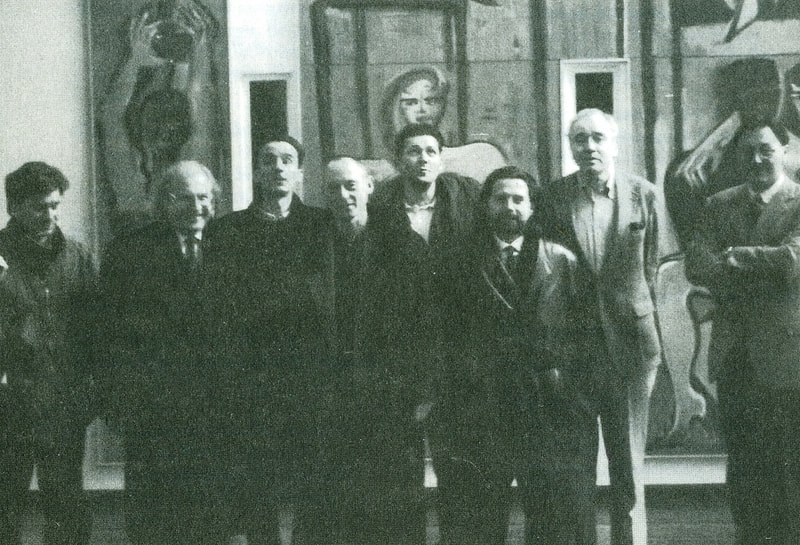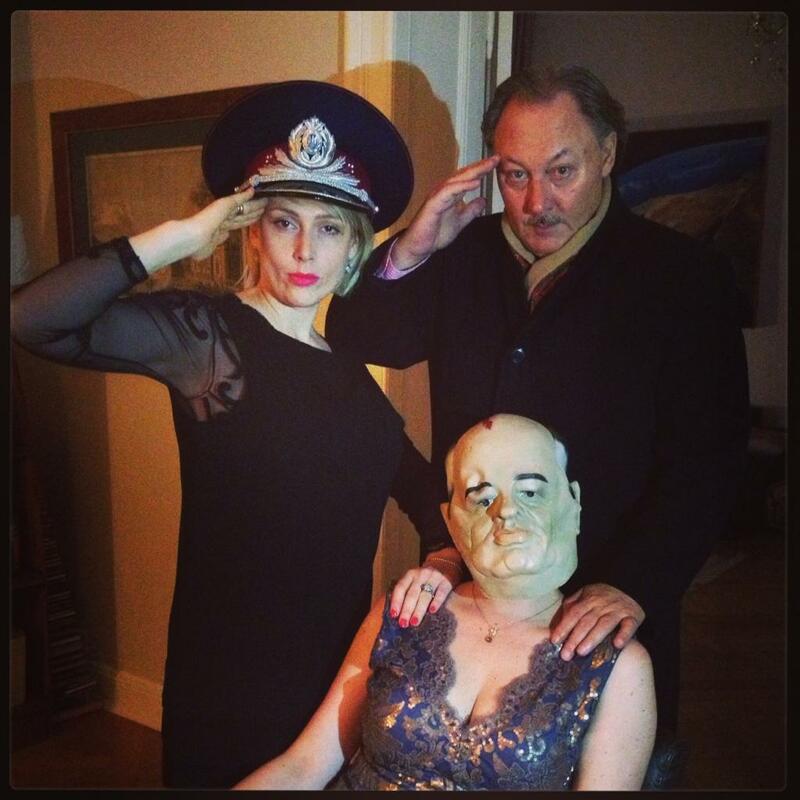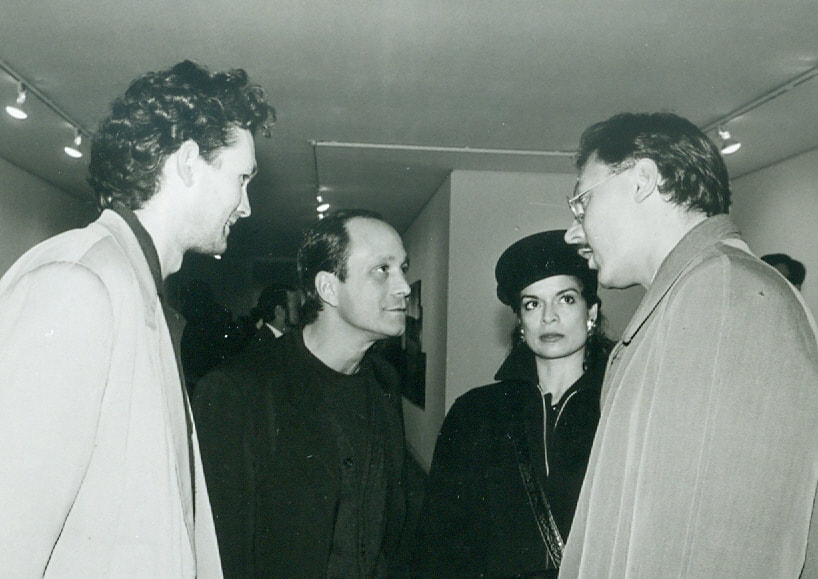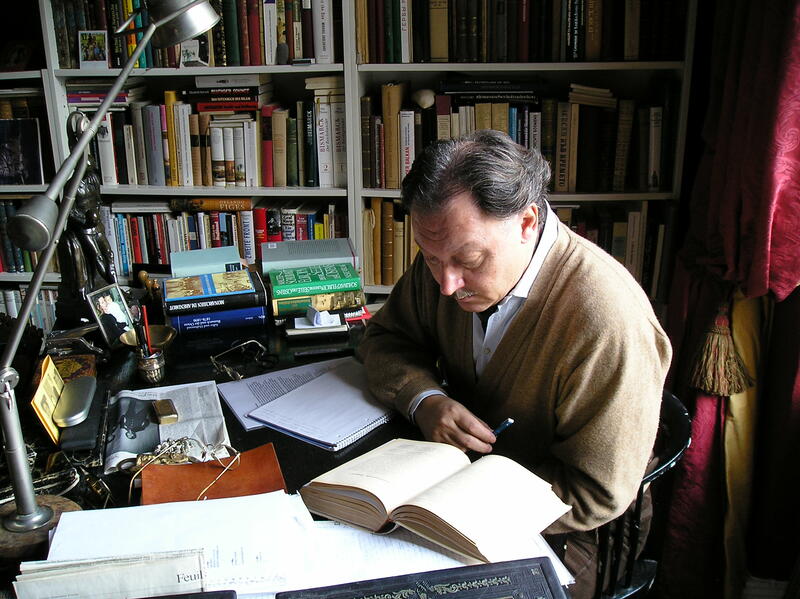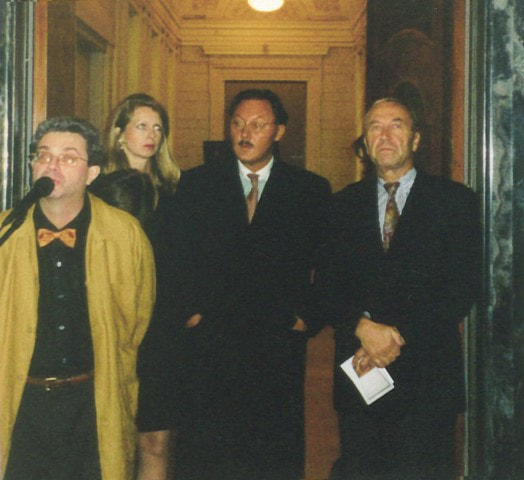biography
Haralampi G. Oroschakoff, born 1955, is an Austrian painter, draftsman and writer. He is the offspring of an old, exiled Russian family with residences in Berlin, Cannes, and Vienna.
Haralampi G. Oroschakoff is considered a pioneer of the East-West dialogue in art and a renewer of the reception of Eastern iconography in Western painting. He attracted attention in the eighties with drawings, text collages, installations, and video performances. His series discretely advance monochrome painting and designate the invisible cultural boundary between the post-Latin West and the post-Byzantine East. …
Please scroll down to the end of the album to read more about Haralampi´s biography.
Haralampi G. Oroschakoff is considered a pioneer of the East-West dialogue in art and a renewer of the reception of Eastern iconography in Western painting. He attracted attention in the eighties with drawings, text collages, installations, and video performances. His series discretely advance monochrome painting and designate the invisible cultural boundary between the post-Latin West and the post-Byzantine East. …
Please scroll down to the end of the album to read more about Haralampi´s biography.
“Oroschakoff´s investigation of the mythical, foreign world of the East opens one´s eyes to the diversity of this ‘other Europe’ in its ‘Slavic forbearance, Asian brutality, and Oriental poetry’ to become a concrete art of the cartography of brittle surfaces as well as vividly colored symbols that can be used polemically.” (Elke Schmitter)
Against the backdrop of East-West rapprochement and subsequent estrangement, Oroschakoff has been engaging as publisher and publicist, e.g., with "Kräftemessen" and Instant Archaeology. Beyond his immediate artistic commitment, he follows the socio-cultural and geostrategic development. Thus, besides drawing and painting, the archiving and juxtaposition of self-conception and behavioral patterns in East and West form an integral part of his work.
In his non-fiction book Die Battenberg Affäre (Bloomsbury 2007), Oroschakoff creates a historical panorama of cultural struggle, connecting historical events of the 19th century. Subject is the Eastern Question. It "is (...) the history of Europe in the Southeast of the continent that follows the collapse and demise of the Ottoman Empire."
Since the turn of the century, Oroschakoff has been participating in political discussions around Russia, the Balkans and the Caucasus.
From the mid-1980s, Oroschakoff returned to his Byzantine Orthodox roots. This led to a focus on the Orthodox cross – the patriarchal (or double) cross. It resulted in a series of pictures with an independent approach to the development of monochrome painting, denoting the invisible cultural boundary between the post-Latin West and the post-Byzantine East. "His deliberate and positive inclusion of diverse fragments from the Slavic-Russian and Asia Minor realms and the attempt to develop a new and contemporary iconography clearly show that Oroschakoff's intention is to shift the emphasis – not for sentimental love of his roots, but for his belief that the East has preserved a cultural vitality which has long been buried in the West."
Against the backdrop of East-West rapprochement and subsequent estrangement, Oroschakoff has been engaging as publisher and publicist, e.g., with "Kräftemessen" and Instant Archaeology. Beyond his immediate artistic commitment, he follows the socio-cultural and geostrategic development. Thus, besides drawing and painting, the archiving and juxtaposition of self-conception and behavioral patterns in East and West form an integral part of his work.
In his non-fiction book Die Battenberg Affäre (Bloomsbury 2007), Oroschakoff creates a historical panorama of cultural struggle, connecting historical events of the 19th century. Subject is the Eastern Question. It "is (...) the history of Europe in the Southeast of the continent that follows the collapse and demise of the Ottoman Empire."
Since the turn of the century, Oroschakoff has been participating in political discussions around Russia, the Balkans and the Caucasus.
From the mid-1980s, Oroschakoff returned to his Byzantine Orthodox roots. This led to a focus on the Orthodox cross – the patriarchal (or double) cross. It resulted in a series of pictures with an independent approach to the development of monochrome painting, denoting the invisible cultural boundary between the post-Latin West and the post-Byzantine East. "His deliberate and positive inclusion of diverse fragments from the Slavic-Russian and Asia Minor realms and the attempt to develop a new and contemporary iconography clearly show that Oroschakoff's intention is to shift the emphasis – not for sentimental love of his roots, but for his belief that the East has preserved a cultural vitality which has long been buried in the West."















